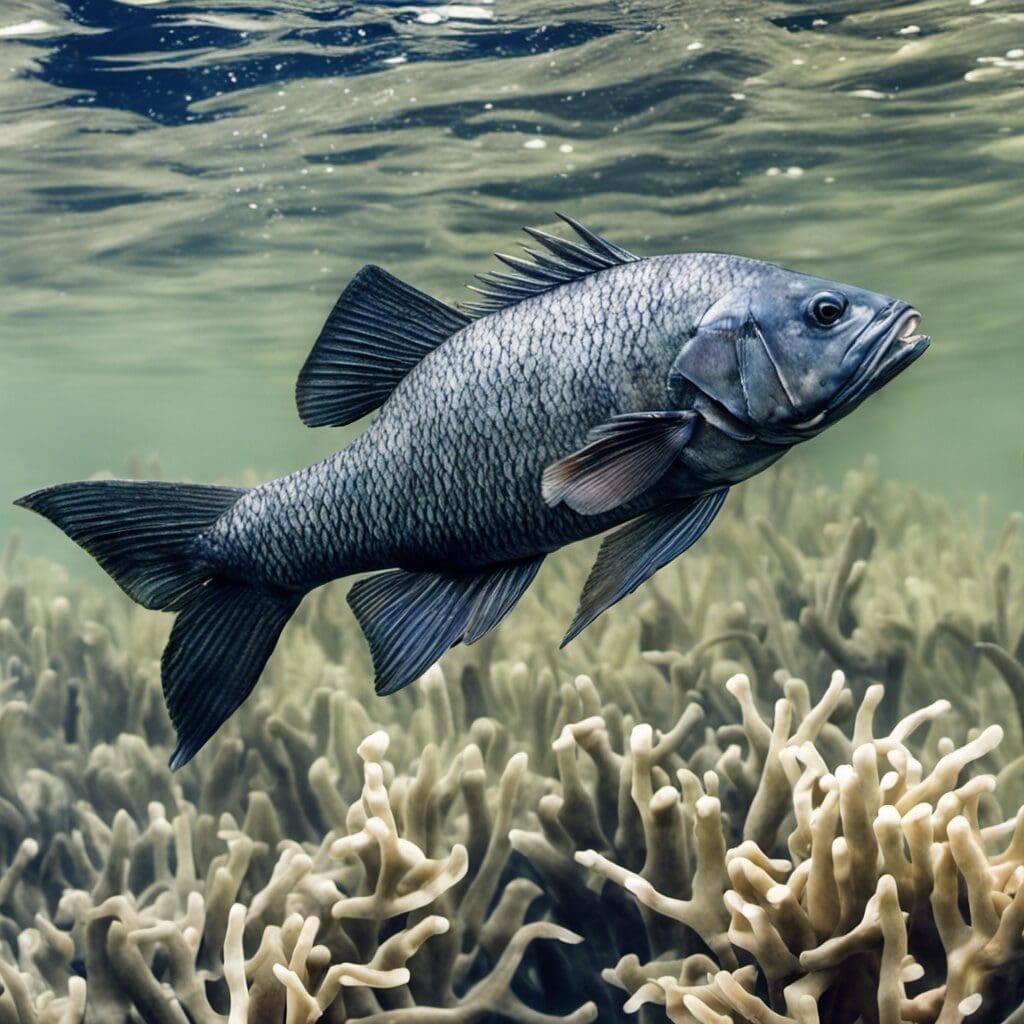Introduction
The Black Jewfish, scientifically known as Protonibea diacanthus, belongs to the Sciaenidae family. Its other common names include the Black Kingfish, the Coorong mullet, and the Butterfish.
Conservation Status
The Black Jewfish is categorized under the “Least Concern” conservation status. Fisheries management strategies are in place to ensure the sustainable use of this species.
Statistics
| Statistic | Average | Range |
|---|---|---|
| Length | 1 meter | 50 cm – 1.8 m |
| Weight | 20 kg | 3 kg – 45 kg |
| Average Lifespan | 20 years |
Distribution
The Black Jewfish primarily thrives in the coastal regions of Australia and Papua New Guinea. They also inhabit Indonesia, the Philippines, and the Solomon Islands. Little information is available about their migration patterns.
Habitats
They prefer marine and brackish environments, predominantly found at depths ranging from 10 to 60 meters. They dwell in warmer waters.
When and Where to See
Seasonal Patterns: They are found year-round, but their numbers significantly increase during the dry season.
Time of Day: Black Jewfish are nocturnal and are most active during the night.
Best Fishing Locations
The top fishing spots for Black Jewfish in Australia include:
- Darwin Harbour, Northern Territory
- Groote Eylandt, Northern Territory
- Prince Regent River, Kimberley
- Gulf of Carpentaria, Queensland
- Exmouth Gulf, Western Australia
How to Catch
Preferred Bait or Lures: Bait such as squid, fish fillets, and prawns are particularly effective.
Fishing Techniques: Bottom fishing is the recommended technique.
Best Time of Day or Season for Fishing: Night-time fishing during dry seasons yields the best results.
Identification Guide
The Black Jewfish is a large, elongated fish with a dark bronze color. It has a long dorsal fin and a rounded tail fin. Tiny white spots can be found on the upper body.
Culinary
How to Cook: Black Jewfish is commonly barbecued or deep-fried in Australia.
Taste Profile: It has a mild, sweet flavor with a low oil content.
Nutritional Information: It is high in protein, low in saturated fats, and it contains omega-3 fatty acids.
Additional Information
Behavior: They are bottom feeders, primarily preying on crabs, prawns, and small fish. They are also known for their strong fight when hooked, making them a popular game fish.
Predators and Threats: Predators include larger fish and sharks. Human activities like overfishing and habitat destruction pose significant threats.
Cultural/ Historical Significance: In Australia, they’re an important part of recreational and commercial fishing. They’re also considered a top prize among game fishers due to their size and fight.

